EGFR ligand shifts the role of EGFR from oncogene to tumour suppressor in EGFR-amplified glioblastoma by suppressing invasion through BIN3 upregulation
- PMID: 35915159
- PMCID: PMC9389625
- DOI: 10.1038/s41556-022-00962-4
EGFR ligand shifts the role of EGFR from oncogene to tumour suppressor in EGFR-amplified glioblastoma by suppressing invasion through BIN3 upregulation
Abstract
The epidermal growth factor receptor (EGFR) is a prime oncogene that is frequently amplified in glioblastomas. Here we demonstrate a new tumour-suppressive function of EGFR in EGFR-amplified glioblastomas regulated by EGFR ligands. Constitutive EGFR signalling promotes invasion via activation of a TAB1-TAK1-NF-κB-EMP1 pathway, resulting in large tumours and decreased survival in orthotopic models. Ligand-activated EGFR promotes proliferation and surprisingly suppresses invasion by upregulating BIN3, which inhibits a DOCK7-regulated Rho GTPase pathway, resulting in small hyperproliferating non-invasive tumours and improved survival. Data from The Cancer Genome Atlas reveal that in EGFR-amplified glioblastomas, a low level of EGFR ligands confers a worse prognosis, whereas a high level of EGFR ligands confers an improved prognosis. Thus, increased EGFR ligand levels shift the role of EGFR from oncogene to tumour suppressor in EGFR-amplified glioblastomas by suppressing invasion. The tumour-suppressive function of EGFR can be activated therapeutically using tofacitinib, which suppresses invasion by increasing EGFR ligand levels and upregulating BIN3.
© 2022. The Author(s), under exclusive licence to Springer Nature Limited.
Conflict of interest statement
Figures
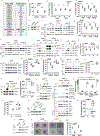

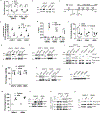
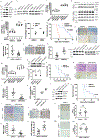



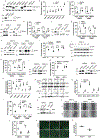

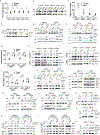
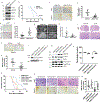

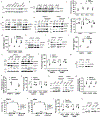


Comment in
-
EGFR ligands dictate tumour suppression.Nat Cell Biol. 2022 Aug;24(8):1189-1191. doi: 10.1038/s41556-022-00967-z. Nat Cell Biol. 2022. PMID: 35915160 Free PMC article.
References
-
- Ramnarain DB, Park S, Lee DY, Hatanpaa KJ, Scoggin SO, Otu H, Libermann TA, Raisanen JM, Ashfaq R, Wong ET, Wu J, Elliott R, and Habib AA (2006) Differential gene expression analysis reveals generation of an autocrine loop by a mutant epidermal growth factor receptor in glioma cells, Cancer Res 66, 867–874. - PubMed
-
- Chakraborty S, Li L, Puliyappadamba VT, Guo G, Hatanpaa KJ, Mickey B, Souza RF, Vo P, Herz J, Chen MR, Boothman DA, Pandita TK, Wang DH, Sen GC, and Habib AA (2014) Constitutive and ligand-induced EGFR signalling triggers distinct and mutually exclusive downstream signalling networks, Nat Commun 5, 5811. - PMC - PubMed
-
- Mishima K, Higashiyama S, Asai A, Yamaoka K, Nagashima Y, Taniguchi N, Kitanaka C, Kirino T, and Kuchino Y (1998) Heparin-binding epidermal growth factor-like growth factor stimulates mitogenic signaling and is highly expressed in human malignant gliomas, Acta Neuropathol (Berl) 96, 322–328. - PubMed
Publication types
MeSH terms
Substances
Grants and funding
LinkOut - more resources
Full Text Sources
Research Materials
Miscellaneous

